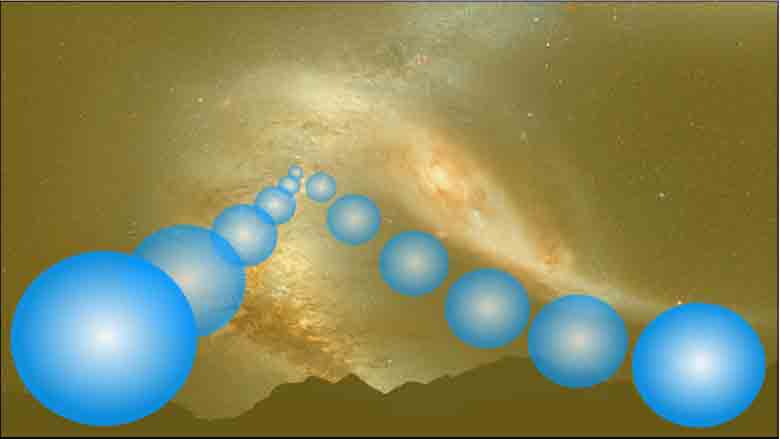
Since hydrogen (H2) often is the subject of the energy debate, we have put together some basic facts about hydrogen.
-
Hydrogen is the first element of the periodic system and the lightest of all molecules
-
Hydrogen is the most abundant substance in the universe
-
Hydrogen is a non odour non toxic highly flammable gas
-
Hydrogen is highly flammable and will burn in air at a wide range of concentrations between 4% and 75% by volume
-
The auto ignition temperature of hydrogen is around 530℃
-
Due to the low mass of the hydrogen atom, hydrogen disperses quickly when leaked into the atmosphere
-
Hydrogen carries a large amount of energy on a mass basis, 33,33 kwh/kg as compared to gasoline which carries around 12,33 kwh/kg or Li-ion batteries which stores around 0,128 kwh/kg
-
Hydrogen carries a low amount of energy on a volume basis. At ambient pressure and temperature around 3 kwh/Nm3 as compared to gasoline which carries around 9100 kwh/Nm3. However when hydrogen is compressed the amount of energy becomes higher, 350 bar – 1480 kwh/Nm3 and 700 bar – 2220 kwh/Nm3
-
Hydrogen is not freely available in nature and needs to be generated from other compounds
-
Hydrogen can be generated by various methods.
More than 97% of the hydrogen currently generated is from fossil sources (6% of global natural gas use and 2% of global coal use ois spent on hydrogen production annually, by mid 2019).
-
Steam methane reforming (CH4) or other hydrocarbons. This has been and still is by far the most common method. During steam methane reforming large amounts of CO2 is released. This method requires around 45 kwh per kg hydrogen produced (this includes the energy carried by the methane used in this process)
-
Splitting of water(H2O) into hydrogen and oxygen by electrolysis (around 3% of the hydrogen generated is by this method). This method only releases hydrogen and oxygen. Water electrolysis requires around 48 kwh per kg hydrogen produced)
-
Pyrolysis using hydrocarbons as feedstock. This method releases only hydrogen, solid carbon (Carbon Black) and water vapour (the amount of energy needed is around 14 kwh of electrical power per kg hydrogen generated in addition to 5,5 Nm3 of Natural gas as feedstock which corresponds to around 50kwh)
-
Methanol cracking. Methanol and steam is by the presence of a copper-zinc cathalyst split into H2, CO, CO2, CH4 and H2O (water vapour). The reaction occurs at a temperature of around 300℃ and at a pressure between 10 – 25 bar.
-
Partial oxidation of hydrocarbons. Oxygen is reacted with hydrocarbon in a sub stoichiometric process (less oxygen than what is needed for a complete combustion of the hydrocarbon).
-
Coal gasification which occurs in large scale, high temperature/pressure vessels where oxygen (or air) and steam are directly contacted with the coal or other solid feed material causing a series of chemical reactions to occur that convert the feed into syngas composed primarily of the colorless, odorless, highly flammable carbon monoxide (CO) and hydrogen and ash/slag mineral residues
-
-
If hydrogen is combusted with pure oxygen only H2O is released. If however, hydrogen is combusted with air (78,08 % nitrogen, 20,95 % okxygen, 0,94 % argon, 0,04 % carbon dioxide by volume) at high temperatures, NOx may be emitted
-
More than 90% of the hydrogen currently generated (in total around 70 million tons annually, by mid 2019) is used for industrial purposes such as ammonia (NH3) and fertiliser production, in oil refining, steel production and other industrial processes.
-
A lot of research and development has been carried out related to production methods for hydrogen and to explore the possibilities of hydrogen becoming an energy carrier to potentially replace fossil fuels. The focus of the R&D has been towards the automotive sector as well as for domestic energy purposes
-
Hydrogen may be used to generate electricity in electrical vehicles by the use of hydrogen fuel cells for on board electricity generation
-
Hydrogen may also be used as fuel for internal combustion engines, however there are issues related to efficiency and NOx emissions if hydrogen is used this way
-
Hydrogen may be blended into Natural gas grid networks, providing gas for heating, other domestic use and for industrial purposes. The amount of hydrogen mixed with the grid gas may be up to 20% without causing serious technical issues needing equipment and other hardware modifications or replacements
-
-
Since hydrogen is the smallest of all atoms, there are certain challenges related to storage, transportation and use of hydrogen. The hydrogen atoms simply are that small that they may escape containers, pipes and appliances that are seen as gas tight for other gases.
-
For automotive purposes hydrogen normally is compressed to 300 bar (heavy vehicles) or 700bar (lighter vehicles such as passenger cars and light trucks) and stored in onboard tanks
-
Hydrogen automotive refueling takes about the same time as for fossil refueling but requires new infrastructure (generation, compression and refueling)
Read more about hydrogen here.